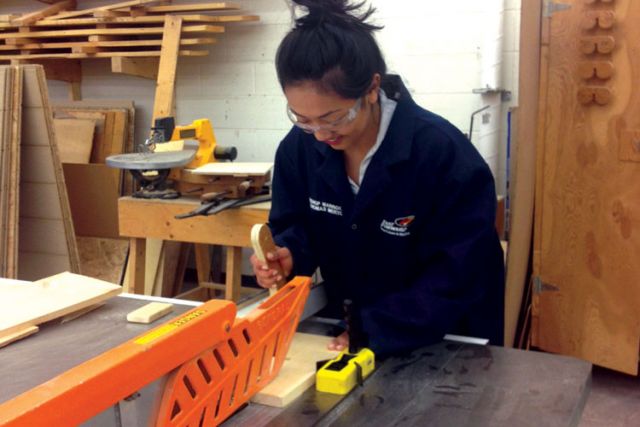“In elementary school I was aiming towards being a cook or a baker,” said the Grade 11 student. “I didn’t really hear about women in non-traditional trades so I cannot say that that is something that I wanted to do in elementary school but now, after being exposed to it, it is definitely something that I am interested in doing.”
Non-traditional trades for women, which were highlighted during a conference held at Barahona’s school, Bishop Marrocco/ Thomas Merton Catholic Secondary School on March 4, include plumbing, carpentry and electrical work in the residential, commercial or industrial sectors.
Barahona wasn’t able to give a specific reason why she, and many of her female peers, never considered these trades as a career choice.
“(They are) almost like an underrated career choice and hearing the women speak about their jobs now, it definitely gives me more insight,” said Barahona. “It is such an exciting job and I think more girls should be exposed to that field.”
With the average age of the current skilled trade worker in Canada sitting above 55, according to Luciano Di Loreto, the Toronto Catholic District School Board’s Ontario youth apprenticeship program project leader, it is more important than ever to expose young female students to these career paths.
“There is a major skill shortage in Canada of skilled trades and as we move forward to 2020 and 2025 most of our skilled trades people will have stepped out and we don’t have a large number of young people filling in those areas,” said Di Loreto. “So we need young people to come in and replace some of those more experienced people that are involved right now in the skilled trades.”
Although it is not rare for a female student to pursue a trade, continued Di Loreto, they tend to gravitate towards hairstyling, cosmetology and the culinary arts. He estimated women represent only about 10 per cent of the work force in the traditionally male trades in Ontario.
This figure becomes more powerful when looking at Statistic Canada’s 2011 conclusion that in Ontario, where about 40 per cent of the nation’s population lives, only 3.5 per cent of residents work in the skilled trades.
The Ontario government also recognizes this as a pressing issue. The Ontario Ministry of Training, Colleges and Universities gave school boards money this year to expose female students to these trades and further support those already interested in them. The Toronto Catholic board alone received $20,000, with a portion of that used to help fund the conference.
“We are trying to highlight here that there are non-traditional trades that most women, for the most part, do not entertain entering as a profession,” said Di Loreto. “We are trying to de-stigmatize that the skilled trades are only for men. We want to show the ladies ... that there are a variety of different people, females in particular, that are in the skilled trades today and have come from all different walks of life.”
Seeing that through the speakers at the conference really hit home with Barahona.
“Hearing them say that they are able to ... do all these sorts of things, that was surprising to me (because) they don’t really look the part but they are capable of it,” she said. “The women who were sitting in front of me, if I ever passed them going down the street I could not tell you that they are in trade work.”
What also struck Barahona was the financial realities of entering a trade rather than going to college or university full-time, which was pointed out by the representative from Toronto’s Humber College.
“Unlike university where you study for a few years, you invest in a great deal of loans and you basically spend the next five to six years while trying to find work trying to pay them back,” she said. “In the trade field you work as well as go to school so you are able to keep up with payments and still live a pretty good life. That would be something that I am interested in.”

